At the beginning of 2018, Naturevolution launched a project to develop beekeeping in Makay. While, on the French side, the team continues to work to supplement the project budget, the Malagasy team has, for its part, launched the first concrete actions, namely the establishment of technical support on the ground, the assessment of the situation specific to each village, and the identification and training of the first beekeepers.
January – Mission to Manakara
At the end of January, a first mission to Manakara, on the east coast of the island, aimed to concretize a partnership with Les Ruches Australes as technical support for our project.
Les Ruches Australes is a small company operating 300 hives spread over 5 apiaries in the vicinity of Manakara, a region of Madagascar known for the quality of its honey. The involvement of Manakara’s beekeepers led to the lifting of the European Union’s embargo on honey imports from Madagascar in 2009.
April – assessment mission to Makay
Three months later, two trainers of Les Ruches Australes accompanied us on the ground for an evaluation mission to three villages in South Makay: Beroroha, Beronono and Tsivoko.
The objectives of the mission were to:
- make an inventory of the existing beekeeping stock, improve knowledge of the honey potential of the area and its timetable,
- present the project to the authorities and local people and assess their interest in the project,
- fine-tuning the project and defining the prospects.
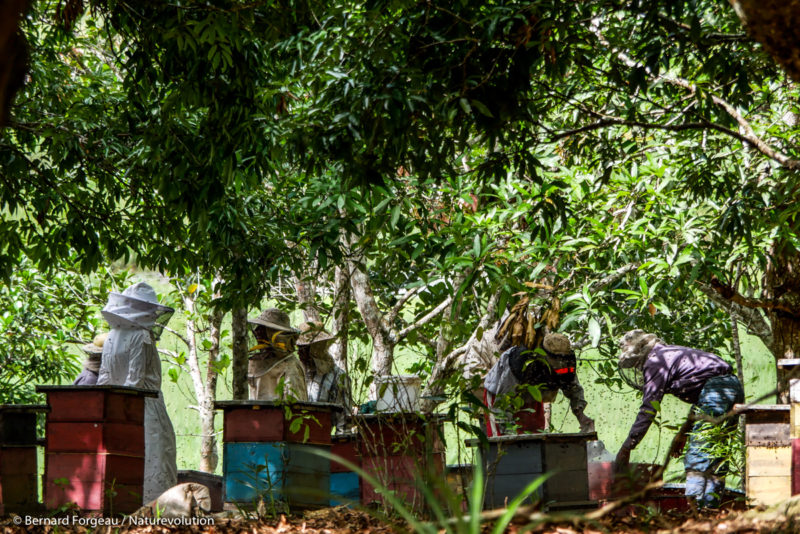
State of the situation of existing beekeeping
To better understand the local uses around honey, the team first went to meet different types of beekeepers:
- traditional beekeepers who usually have a single hive dug out of a tree trunk next to their home. Their knowledge of bees being rudimentary, the harvest is meagre, the honey of poor quality and mainly self-consumed. It is not an economic activity in its own right.
- honey-pickers on the other hand, who collect honey from a wild swarm, most of the time resulting in its destruction.
In Beroroha, a town of 5000 inhabitants that marks the end of the bush taxi trail, the team visited 13 traditional beekeepers, some of whom have been active for more than 15 years, sign of a important breeding ground for future beekeepers trained in the techniques of modern breeding, more respectful of bees and hive products. Several of them, including the director of the public school himself, own several hives and harvest 3 times a year (April, June, November) up to 10L per hive and per honeycomb.
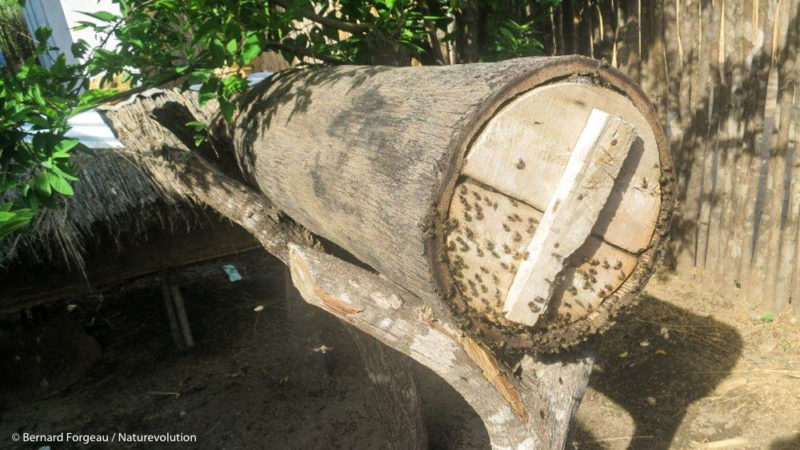
In the smaller villages closer to the Makay, with about a hundred huts like Beronono and Tsivoko, the situation is very different. Although hives are rare, traditional beekeeping is very limited. Usually more widespread, honey-picking, practiced by villagers ignorant of the social organisation of bees and carrying out destructive sampling, is now almost a memory.
Wild swarms have almost completely disappeared from the surrounding forests (which are also heavily degraded), confirming that honey-picking is not a sustainable activity. The villagers also expressed their regret at the lack of honey.
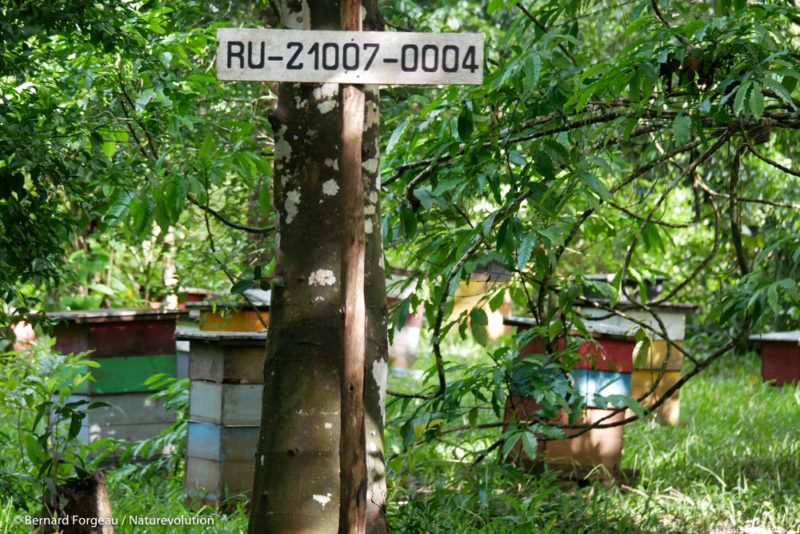
Honey species and timing of harvest
Thanks to the presence of many traditional beekeepers, we were able to establish a list of honey species, as well as a schedule of flowering and associated harvests:
Species flowering in March/April/May
The Tsinefo or Ziziphus or Jujubier (Tree)
The Rosewood (Tree)
Wild boar grass (Ahidambo Heteropogon contortus L. ) (Herb)
Kily or Tamarindus indica or Tamarindus
The Danga (Herb)
The Kipisopiso (Shrub)
The Vary or Rice
Lengo (liana)
Muscat peas or Takilotra or Mucuna paniculata Baker (Liana)
Two species Nonoka (Ficus) (Tree)
The sweet potato
Species flowering in October/November
The Tsingilofilo (Tree)
The Canarium or Ramy (Tree)
The Taratra
The Manipiky (Vernonia appendiculata) ambiaty or vernonia
Sakoa (Poupartia caffra or Sclerocarya birrea) (Tree)
The Goyavier (Shrub)
The sweet potato
Species flowering in December
The Marula Manga or Mango Tree (Tree)
The Vary or Rice
We still lack some information about other honey plants for which we have only the vernacular names.
The harvest schedule is as follows:
- Harvesting takes place in April, October and December*.
- The months of scarcity (little or no flowering) are in June/July and January/February.
- The swarming takes place in September.
(*) 2020 update: it is interesting to note that, contrary to these forecasts, the 2019 harvest in South Makay took place in June, and the 2020 harvest in North Makay took place in May.
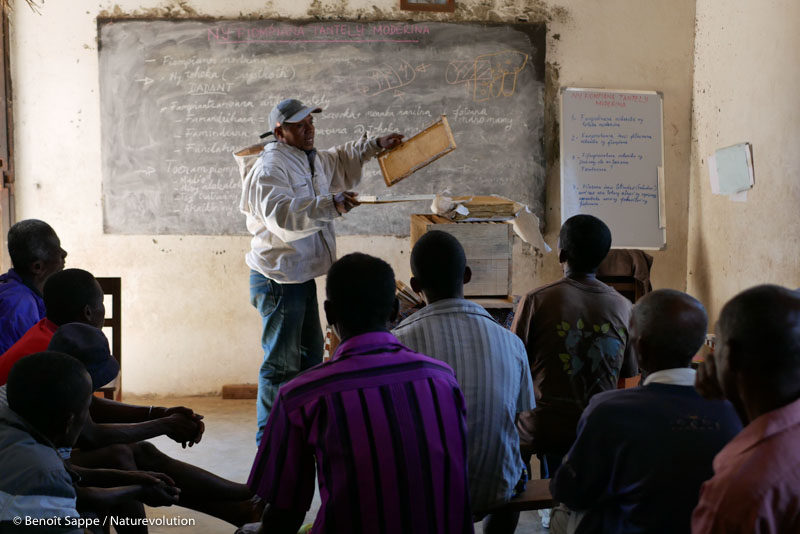
Presentation of the project and initial training
In each locality, a public meeting was held to present the project and train interested villagers. They were attended by between 15 and 25 people, including a number of women. A general overview of beekeeping and hive products was presented, followed by a discussion of the fundamentals of beekeeping, the establishment of a hive, the threats to bees, and the timing of flowering and harvesting.
The response to the project has been positive, with some particularly motivated people.
In Tsivoko, where the gathering took place under a tamarind tree next to the primary school, many people showed interest, opening up the possibility of setting up about 20 hives in 10 families.
In Beroroha, where there is already a breeding ground of traditional beekeepers, we are planning to set up a dozen hives with the help of the most active local beekeepers.
Finally, in Beronono, we also plan about ten hives, spread over the 5 hamlets that make up the village.
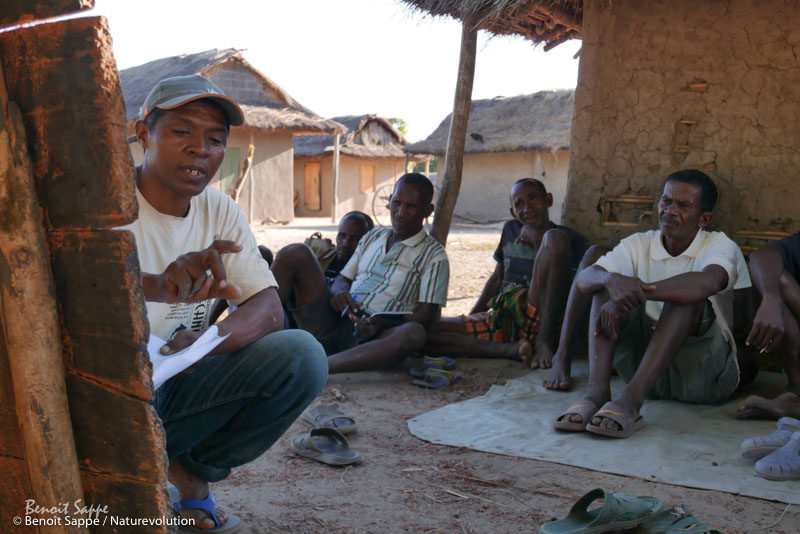
In the heart of the largest Makay forest
Finally, in the Menapanda forest, the largest of the Makay, a 3-hour walk from Tsivoko, the honey vegetation is much richer and in better condition. A swarm found in a tree trunk was transferred to a hive left for observation. We plan to set up a few hives here, which will be managed by the ranger of Menapanda, with the objective of observing the behaviour of bees far from a village and multiplying the swarms..
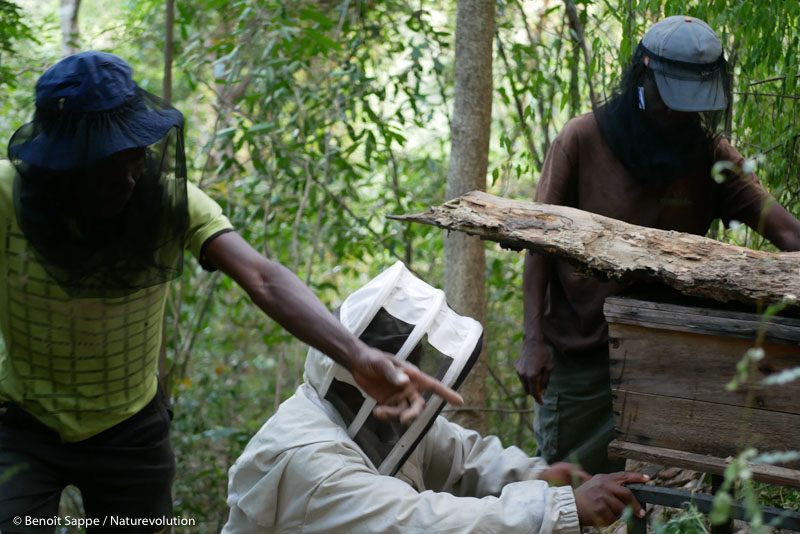
Adaptation of the project and prospects
The disappearance or scarcity of beekeeping, reflecting the depopulation of wild swarms in the forests near villages, leads us to think that 1) the start of the apiculture project is timely, and 2) that the development of beekeeping should be accompanied by reforestation of honey species on the outskirts of villages.
Otherwise, the current state of vegetation, for example in Beronono, will only support a limited number of hives, and will not allow for an increase in the number of beekeepers. This is consistent with our expectations, since the Naturevolution team had already considered associating targeted reforestation actions with the development of beekeeping, which is an integral part of our conservation strategy.
This will make it possible to use beekeeping not only as an economic activity, but also as a means of restoring degraded habitats and raising awareness of environmental protection..
Join us on this beautiful project and support
our crowdfunding campaign with a donation.
__

Partners: This project was supported by the Agence des Micro Projets, an international solidarity initiative of La Guilde funded by AFD. It is also made possible thanks to the commitment of the Insolites Bâtisseurs Foundation – Philippe Roméro, the corporate concierge company bien être à la carte, and the many individual donors who supported it on our crowdfunding campaign.
